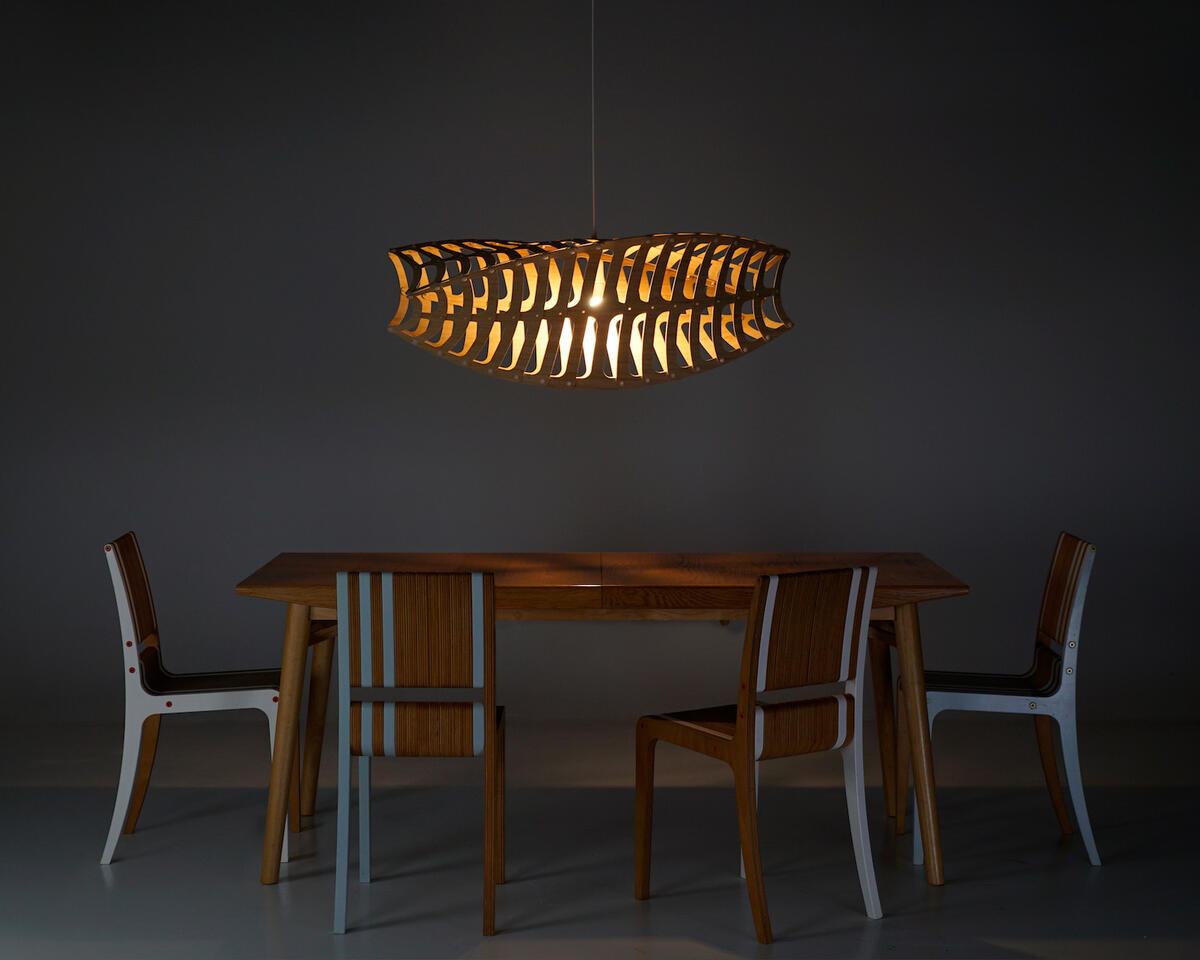David Trubridge is a creator to the core. Even as a child growing up in southern England, he felt compelled to make things. “I used to collect discarded matchsticks off the beachfront promenade where I lived and make houses and boats out of them,” he tells Business of Home.

No surprise then that despite earning a degree in naval architecture at Newcastle University in North East England, Trubridge opted to move to the country and focus on woodcraft and stonework instead. “So much of naval architecture was about engineering, and my creativity was sidelined,” he says. “That led me to buy an old stone ruin high up in the northern Pennines and renovate it into a rural home and studio.”
While completing the renovations, Trubridge took a part-time job as a forester to learn more about felling and milling timber, eventually teaching himself how to design and craft furniture. “The best teacher is the wood itself if you listen,” he says.
He spent the next few years making and selling bespoke pieces to earn a living, before taking off on a sailing yacht with his wife and two small children for a five-year-long seafaring adventure across the Atlantic and Pacific oceans. “We indeed ended up in New Zealand,” he explains. “I supported us on the way by making furniture for expats in the Caribbean and Tahiti.”

Not long after, Trubridge launched his namesake company, focusing on wooden furniture. In the early 2000s, he directed his attention to lighting after showcasing his Coral light at Fuorisalone in Milan. “There was nothing like Coral in the market at the time—a kit-set light made from flexible thin plywood—and I realized I had discovered my very own niche,” he says. “It soon became obvious that this was going to be a much more profitable product than furniture, so we made the shift to solely producing lighting.”
By 2011, he had moved his company into a custom-built building in Whakatu, Hawke’s Bay, which still houses the brand’s showroom and design studio and a full manufacturing facility. Today, he employs 15 team members, most of whom have been with the company for more than a decade.
All of Trubridge’s designs begin with an idea that he then sketches out on paper. Once he works out the details, he creates a digital model and begins experimenting with different materials before designing a hands-on prototype. “This is just the start of a long process where we go round and round through these steps—with different materials each time—until we settle on the final design,” he explains.

Though bold, geometric silhouettes may be the most eye-catching component of Trubridge’s work, natural materials play the paramount role. “I work primarily with wood and bamboo, which is a grass,” he says. “Not only are these materials sustainable; I believe we need elements of pure nature in our increasingly, and sadly, synthetic lives.” His latest launches include Toru and Tūī—a pair of sculptural bamboo and birch plywood pendant lights with free-form, cutout frames that cast cool shadowy shapes—and an outdoor-friendly version of his inaugural Coral light design constructed from recycled paper and ecoresin. “I prefer to create classic designs that will last and are not ephemeral,” he says. “Coral is still our most popular light even though it is the oldest, at 20 years.”
In addition to product design, Trubridge also works with local artisans and clients on one-off commissions, including his award-winning Horoeka design for the Redwoods Treewalk in Rotorua, which features a 30-foot-tall wood lantern—in the middle of the forest—that visitors can walk through like a treehouse. “I’m also collaborating with some aboriginal people near Melbourne on a large sculptural installation,” he says. “I am always thinking about new designs because I love to create, and even though we do not have anything new in our production line at the moment, my inner imperative to make things will inevitably manifest itself.”
If you want to learn more about David Trubridge, visit his website or Instagram.



























